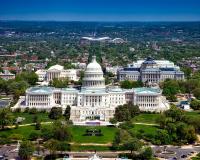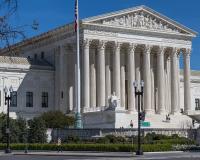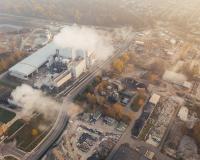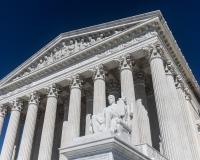
Vibrant Environment
Climate Change And Sustainability
All | Biodiversity | Climate Change and Sustainability | Environmental Justice | Governance and Rule of Law | Land Use and Natural Resources | Oceans and Coasts | Pollution Control

Developments this past summer—including the U.S. Supreme Court’s decision in West Virginia v. EPA and the historic passage of the Inflation Reduction Act (IRA)—have dramatically reshaped the future of U.S. climate law.

Twenty-five years before Silent Spring, Rachel Carson published her first essay in The Atlantic on the wonders of ocean life. Titled “Undersea,” the piece showcased Carson’s “commitment to making the reader feel something,” reports Anelise Chen in the same magazine 85 years later.

When the pandemic started, it seemed you couldn’t turn a page or open an email without seeing “unprecedented” used in one context or another. And it was true—we were in uncharted territory, and among everything else, it was hard not to keep returning to that locution. I clearly remember sending a mass email using the word, thinking I was the first person to stumble upon this apt descriptor; little did I know how ubiquitous it would become.

The Environmental Law Institute’s 11th GreenTech webinar held on July 18, “The Role of Carbon Capture (CC) and Direct Air Capture (DAC) Technology in Our Climate Strategy,” couldn’t have been timelier. A week later, on July 27, Democratic negotiators reached an agreement with Sen. Joe Manchin (D-W. Va.) on a proposal that will invest $369.75 billion over the next decade in energy and climate programs, including billions in CC technologies.

As the national conversation following the West Virginia v. Environmental Protection Agency (EPA) verdict showed, climate change continues to be a focal point of this generation. And that conversation is happening both inside and outside the courtroom in the form of amicus briefs.

"[A] single courageous State may, if its citizens choose, serve as a laboratory; and try novel social and economic experiments without risk to the rest of the country.”
Justice Louis Brandeis wrote those words nearly a century ago, and they are particularly relevant to a set of experiments in environmental regulation now being carried out at the state level.

What events, circumstances, and perspectives have ongoing impacts on migrants’ lives, and how can we better understand the complexity of this ongoingness?

The Biden Administration recently finalized the first phase of a two-part rulemaking process to reverse some of the Trump Administration’s revisions to CEQ rules for implementing NEPA. In mid-April, ELI hosted a panel to discuss how these new rules might alter federal agency reviews of climate change and environmental justice impacts.

Just over a half-century ago, Diet for a Small Planet, Frances Moore Lappé’s surprise best seller, exposed the harms of animal agriculture to a wide audience in the same way that Rachel Carson’s book of a decade earlier, Silent Spring, put to widespread shame the practice of applying pesticides to cropland. The title of Moore Lappé’s book encapsulates her thesis. The math in 1971 made a compelling case that abandoning meat is indeed necessary to avoid crossing planetary boundaries.

Rice is a primary food source for more than half of the world’s population—especially in Asia, Africa, and Latin America. In China, the rice-consuming culture I’m most familiar with, rice is breakfast, lunch, dinner, and dessert. Even the Chinese character for “cooked rice” simultaneously means “food.” Rice is security, sustenance, and life itself.